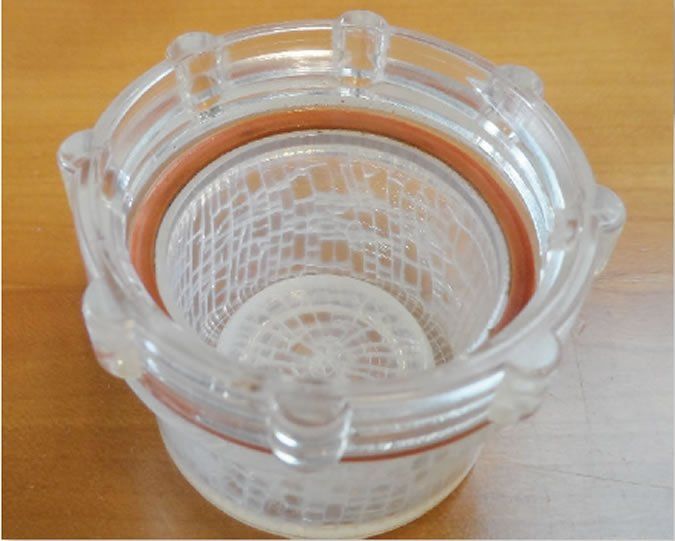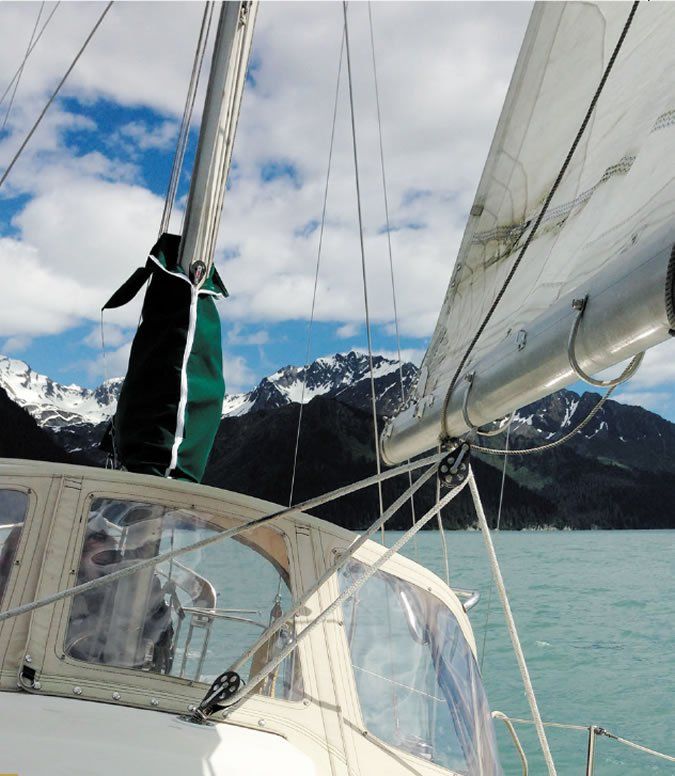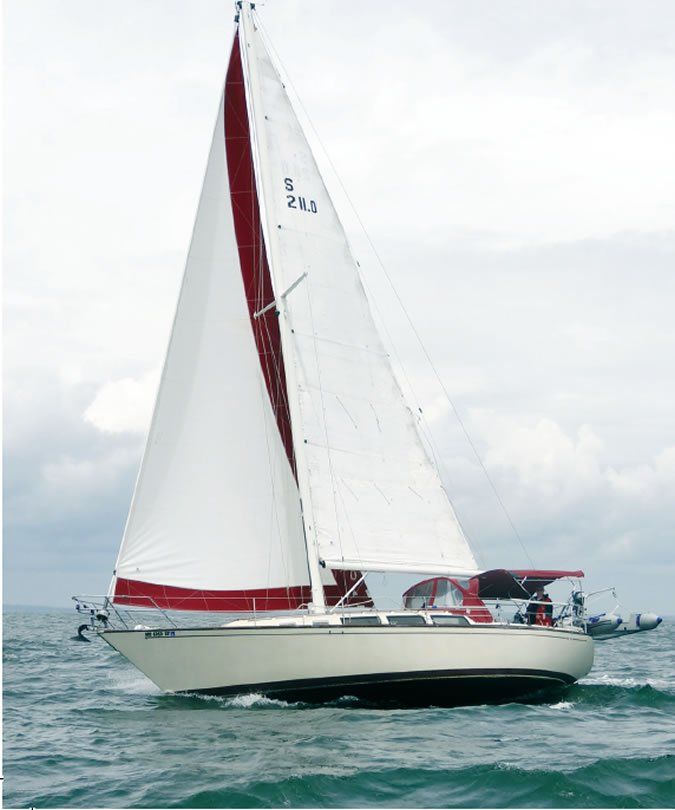
In regard to PSs marine sanitation hose test report (PS April 2012): One of the issues we have run into is winterization. Several hose manufacturers state that their hose is not resistant to glycol-based antifreeze, which is what most winterization fluids use to depress the freezing point. After we ended up with a really bad stink, we read up on the hose manufacturers website and realized that our hose was not compatible with the fluid we had used. (This actually caused me to renew my subscription to Practical Sailor.) It would be good for your next articles Value Guide to include a column on winterization compatibility.
Dave and Della Swartz
Polaris, Pearson 365
Seward, Alaska
Thank you for supporting our mission! We have several past articles on this topic at www.practical-sailor.com. (You can do a Google search for Practical Sailor ethylene glycol to find links to all the articles.) But here is some guidance regarding your specific problem.
Basically, all of the hoses we tested are compatible with ethylene glycol (EG). However, while virtually all common plumbing materials are compatible with EG, vinyl, neoprene, butyl rubber, CPVC, EPDM, and polyurethane are not rated for use with propylene glycol (PG), the active ingredient in most marine winterizing formulations. There are good reasons PG is not used in automobiles, chemical compatibility leading the list.
Vinyl-based hoses (Trident VAC XHD, Shields 148, etc.) exhibit increased permeability with exposure to propylene glycol. Polyurethane (Shields Poly-X), EPDM (Trident 101/102), and butyl rubber (Raritan Saniflex) are either softened or hardened by exposure to PG. Additionally, many neoprene head and pump materials (Jabsco joker valves, O-rings and flappers, and pump impellers) experience substantial hardening and cracking. PG winterizing is probably the leading failure cause of joker valves and raw-water impellers. Certain hard plastics, like those used in raw-water strainers, are prone to crazing with propylene glycol.
We suggest winterizing head and engine systems with ethylene glycol, not propylene glycol. Both types of glycol are equally recyclable, have equivalent marine toxicity, and are equally biodegradable (see www.sciencelab.com and http://water.epa.gov). Boat owners should remove (and leave out) plastic strainer bowls during winterization, and they should blow out or drain where possible. Ethylene glycol should NOT be used for potable water systems, because it is highly toxic. Potable water systems should only be treated with propylene glycol, which has lower toxicity for mammals and humans.
Hydrostatic PFD Cap Kit
In response to your reader letter in the November 2015 Mailport regarding converting an auto-inflate PFD to a manually inflated PFD: You mentioned that you did not know of any conversion kits for hydrostatic inflatable PFDs. However, we (Landfall Navigation) sell Mustang Survivals MA7219 Auto-Manual Conversion Cap for the Hammar hydrostatic inflator. This unit snaps over the Hydrostatic inflation valve, which cuts off the hydrostatic pressure when immersed in water and prevents an automatic inflation. Once the cap is removed, the vest is restored to automatic inflation status. But, according to Mustang (www.mustangsurvival.com) and as the instruction sheet indicates, use of the MA7219 Conversion Cap voids the U.S. Coast Guard approval for the PFD.
Capt. Henry E. Marx
Landfall Navigation,
www.landfallnavigation.com

Boat Jello
In regard to your Aug. 14, 2012 blog post, Do-It-Yourself Fuel Tank Cleaning: I recently purchased a boat that had seen relatively calm sailing and motoring the previous five years. After 170 miles of 7- to 12-foot swells in a 32-hour period, the engine decided to take a break. Jello was what I found in the primary filter. The metal tank is glassed into the boat, and theres no access port. I don’t think I have the resources to do or pay for a serious tank cleaning. Im not sure to what extent the sludge that came out in the filter is still hanging around in the tank. I was thinking that a potentially effective way of monitoring jello buildup in the fuel line and preventing another clogged-filter failure would be to install a pre-filter before the primary filter. I had in mind a clear bowl with 380-micron, stainless-steel mesh such as the Goldenrod Fuel Tank Filter. What are your thoughts on this plan, or on any considerations for installation and safety?
Ryan McCann
Via www.practical-sailor.com
Its difficult for us to advise you on fuel filtration without detailed knowledge of your fuel system-it would also help to know more about the jello. But we do have a few thoughts, born of testers long experience in the fuel business.
What people normally call jello is bacterial growth in the fuel and is different from sludge. Sludge from fuel polymerization and tar formation looks more like grit and tar. Since bacteria are sub-micron in size, they will go through most any filter, growing on the other side. They will also get worse with time.
If filters are clogging, the tank needs cleaning. We have experimented with cleaning chemicals and vendors who will polish the fuel (this may cost less than youd expect), but in the case of bacterial contamination, the real answer is giving the tank a good scrubbing. Additives may help prevent some contaminant build-up, however, no additive will remove years of accumulated organic- or mineral-based sediment or water.
If you want to be certain that your tank is clean, the best and only sure way to do it is to get inside the tank. Its not as difficult as it sounds: Access plate kits are available. These can be installed by a skilled do-it-yourselfer or your favorite boatyard. Once the inside is accessible, cleanup can vary from light-duty, swabbing with a lint-free rag, to heavy-duty, requiring mechanical abrasion with paint scrapers, brushes, and solvents.
It is possible to do an acceptable cleaning job using a power washer through a relatively small hole (fuel gauge sender, but this depends on baffle locations), sucking the water out with a pump and hose while you work. You need to use 45- and 90-degree bends on the end of the lance to hit the top and corners. Just keep moving it around and expect to generate quite a bit of wastewater, so you will need a drum.
Next, the system must be sterilized with a shock dose of a biocide (see PS July 2009). Shocking the system without cleaning the tank generally leads to dead bugs sloughing off the walls en masse, settling at the bottom of the tank, and catastrophically clogging lines and filters. After youve cleaned the tank, simply add the recommended dose on the first fill (Biobor JF is good), and maintain the system with regular biocide treatment.
It is also a good idea to have a switchable pair of Racor-like filters before the engine and a stack of spare filters. Even after cleaning the tank, you should expect to foul more filters as the dead bugs continue to slough off the fuel lines and corners.
For more on fuel-tank cleaning, be sure to read the Aug. 4, 2012 blog on DIY fuel cleaning, as well as the November 2006 PS Advisor.

Tayana 37 Review
In regard to your November 2015 updated review of the Tayana 37. In a previous article (which I cannot now locate), you mentioned that the Tayana 37 has an LPS of 104 and a stability index of 112, well below the recommended minimum of 120. I confirmed this by looking at U.S. Sailing ratings. I believe your updated review should have mentioned this shortcoming.
Terry Thatcher
Portland, Ore.
Metals in Fuel Systems
I just read your article Additives versus Gum, Sludge in the November 2015 issue. I was a little surprised by the section on copper and zinc, and their affect on diesel fuel. A few years ago, after reading an article in PS about dual primary filters, I installed two new Racor filters with brass connectors and tapered hose connectors to make a quick switch to the spare primary filter in the event that my working primary filter ever got clogged. It never has, and my fuel has always been clean. However, should I replace those brass valves and fittings with stainless or other fittings? Brass contains copper, or is the copper not an issue in brass?
Tom Fisher
North Star, S2 11.0 meter
Cambridge, Md.
Yes, brass contains copper, and brass valves are on the list of materials that marine engine manufacturers advise against. We have forwarded your questions to the National Marine Manufacturers Association (NMMA) and the American Boat and Yacht Council (ABYC), and they have agreed to look into it. Until we get their input, we would not go so far as to recommend replacing existing equipment, but instead, we suggest using a fuel additive that offers corrosion protection (see PS November 2015); these will prevent copper reactions. We currently have a sample of untreated diesel aging in the presence of copper and will be testing the affect of additives on filtration; stay tuned for the results.
Correction
The November 2015 issue evaluated the overall performance of diesel and gasoline storage additives. Both of the Sta-Bil brand products that we tested, Sta-Bil Marine Formula Ethanol Treatment and Sta-Bil Diesel Fuel Stabilizer, met industry standards, performed acceptably in our tests, and deserve a Recommended rating. The online version of the article has been corrected to reflect this.
The September 2015 article on fighting mold and mildew gave the incorrect dilution ratio for the Clorox Pool and Spa Algae Eliminator. It should have said that we used a 2-percent solution of the original material; a little goes a very long ways, so mixing 3 ounces per gallon of water is about right.





































